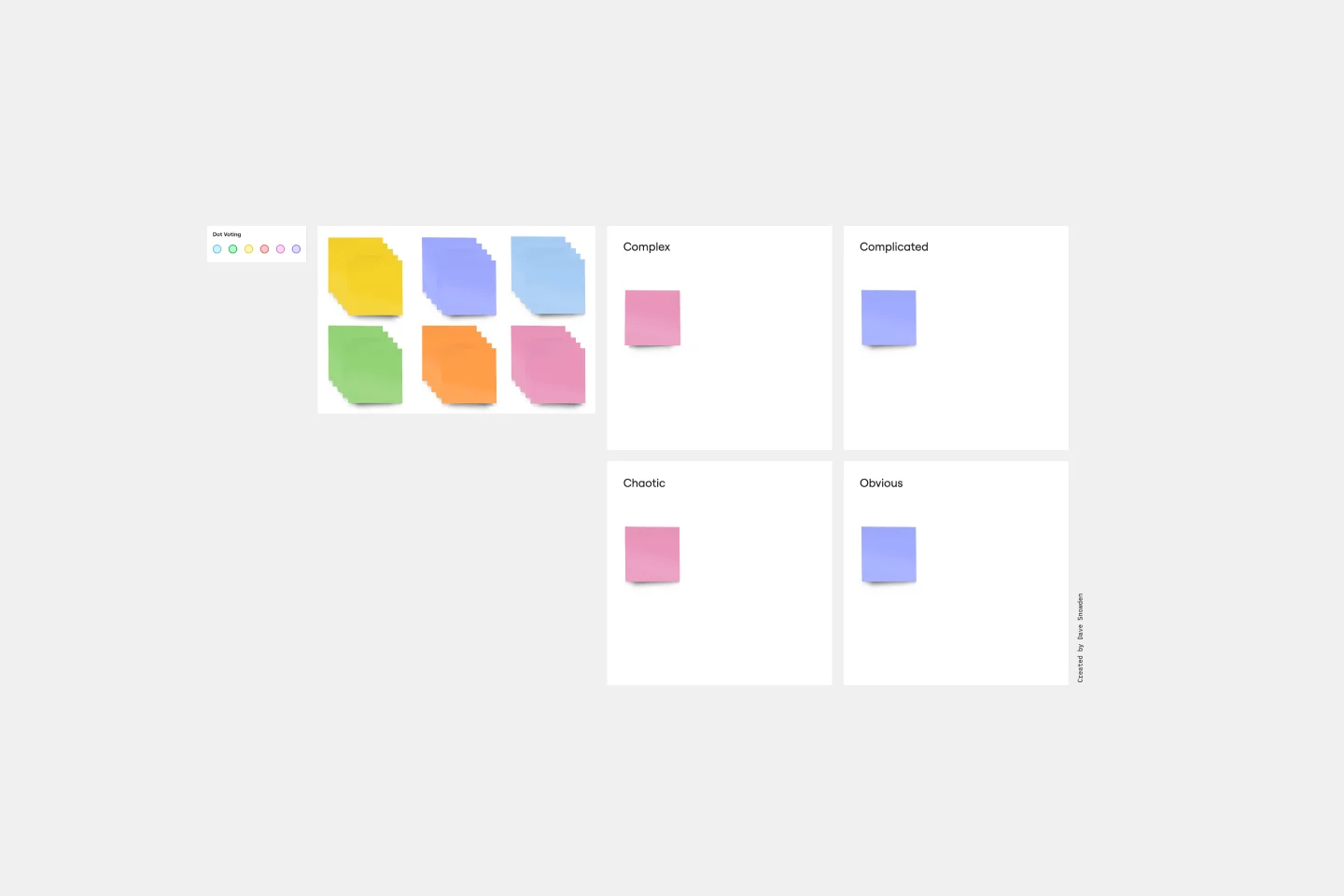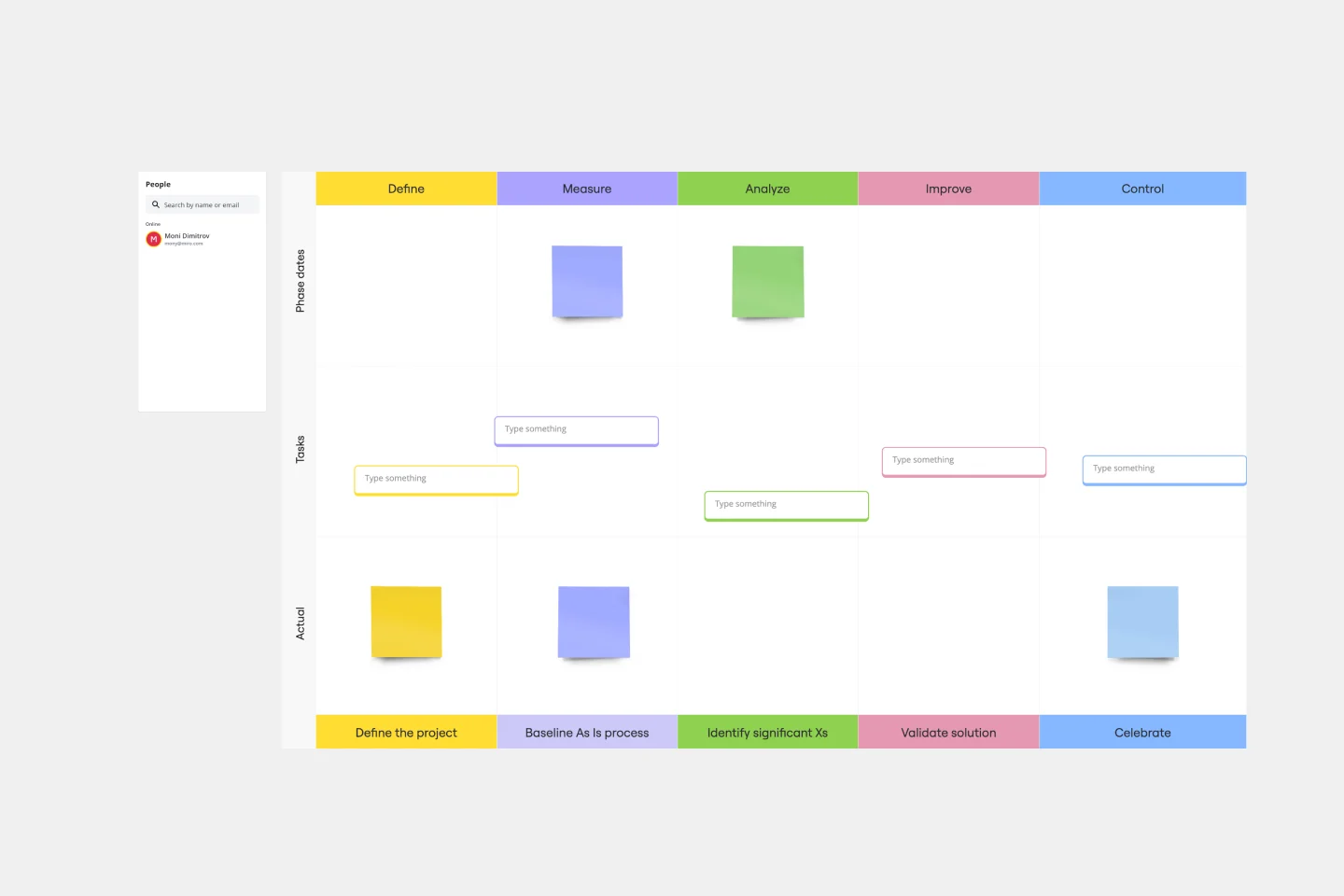About the Blue Ocean 4 Actions Framework template
The Four Actions template is designed to help entrepreneurs think in more innovative ways about the products they are creating relative to the industry. The framework will help you maximize user value and eliminate unnecessary product features by eliminating and reducing user pain, and raising and creating user gain.
Who created the 4 Actions Framework for Blue Ocean Strategy?
The Blue Ocean Four Actions Framework was created by W. Chan Kim and Renée Mauborgne. They are Professors of Strategy at INSEAD, one of the world’s top business schools, and co-directors of the INSEAD Blue Ocean Strategy Institute in Fontainebleau, France. Together, they wrote a best-selling book Blue Ocean Strategy: How to Create Uncontested Market Space and Make the Competition Irrelevant.
Why use the Four Actions Framework?
The Blue Ocean Four Actions Framework can help you assess whether you are spending money in the correct ways around your product to maximize user gain and minimize user pain. Identify the pains that really matter for your product and the gains that really matter with this template. This way, you are getting the most value with the least cost within the total product market.
When to use the Four Actions Framework Template
The Four Actions Framework Template is most useful when you help create value innovation and break the value-cost trade-off. W. Chan Kim and Renée Mauborgne use the terms red and blue oceans to describe the market universe. They say that ‘red oceans are all the industries in existence today—the known market space.’ In the red oceans, industry boundaries are defined and accepted, and the competitive rules of the game are known. As the market space gets crowded, prospects for profits and growth are reduced. Blue oceans, in contrast, denote all the industries not in existence today—the unknown market space, untainted by competition. In blue oceans, demand is created rather than fought over. So the Blue Ocean 4 Actions Framework Template is a great tool to consider when you feel like your company or your product is stuck in the ‘red ocean’ and you are looking for ways to innovate.
How to use the 4 Actions Framework template
Step 1: Eliminate
In each column, it’s important to ask questions about the industry standards in your product space. First, ask yourself, which factors that the industry has long competed on should be eliminated?
Think of the factors that require a lot of investment and effort, but don’t bring a lot of revenue/new customers and, in general, don’t drive key metrics up. These can also be the factors that made more sense in the past but are not as useful now — for example, a feature of differentiated a digital product in the past but became obsolete as time passed.
Step 2: Reduce
Which factors should be reduced well below the industry’s standard? Think of the features/characteristics of your product that are well designed to beat the competition but take to much time and resources. Can you strip this down to something more simple but still competitive and relevant to your users?
Step 3: Raise
Which factors should be raised well above the industry’s standard? What are the pain points that the market does not address? Think of the way you can build features that will help your customers solve challenges that other companies are not solving.
Step 4: Create
Which factors should be created that the industry has never offered? This is one of the most challenging questions and it requires a deep understanding of your customers’ interests and desires, as well as a good insight into where the industry is going. The goal is to think about the future and the challenges customers haven’t articulated yet.
FAQ about the Four Actions Framework
What is the Four Actions Framework?
The Four Actions Framework is a blue ocean strategy tool that poses four central questions designed to help you create value innovation and break the value-cost trade-off. These four key questions or actions include: Eliminate, Reduce, Raise and Create. The framework helps you raise and create customer value, and reduce or eliminate what is not needed.

Miro
The AI Innovation Workspace
Miro brings teams and AI together to plan, co-create, and build the next big thing, faster. Miro empowers 100M+ users to flow from early discovery through final delivery on a shared, AI-first canvas. By embedding AI where teamwork happens, Miro breaks down silos, improves alignment, and accelerates innovation. With the canvas as the prompt, Miro’s AI capabilities keep teams in the flow of work, scale shifts in ways of working, and, ultimately, drive organization-wide transformation
Categories
Similar templates
DMAIC Analysis Template

DMAIC Analysis Template
Processes might not seem like the funnest thing to dive into and examine, but wow can it pay off—a more efficient process can lead to serious cost savings and a better product. That’s what DMAIC analysis does. Developed as part of the Six Sigma initiative, DMAIC is a data-driven quality strategy for streamlining processes and resolving issues. The technique is broken into five fundamental steps that are followed in order: Define, Measure, Analyze, Improve, and Control.
Cynefin Framework Template

Cynefin Framework Template
Companies face a range of complex problems. At times, these problems leave the decision makers unsure where to even begin or what questions to ask. The Cynefin Framework, developed by Dave Snowden at IBM in 1999, can help you navigate those problems and find the appropriate response. Many organizations use this powerful, flexible framework to aid them during product development, marketing plans, and organizational strategy, or when faced with a crisis. This template is also ideal for training new hires on how to react to such an event.
Communications Plan Template

Communications Plan Template
You saw the opportunity. You developed the product. Now comes an important step: Find your audience and speak to them in a way that’s clear, memorable, and inspiring. You need a communications plan—a strategy for controlling your narrative at every stage of your business—and this template will help you create a good one. No need to build a new strategy every time you have something to communicate. Here, you can simplify the process, streamline your messaging, and empower you to communicate in ways that grow with your business.
Work Plan Template

Work Plan Template
A work plan is essentially a roadmap for a project. It articulates the steps you must take to achieve the desired goal, sets demonstrable objectives, and establishes measurable deliverables. An effective work plan guides you throughout the project lifecycle, allowing you to realize an outcome by collaborating with your team. Although work plans vary, they generally contain four core components: goals, strategy, tactics, and deliverables.
DMAIC Analysis Template

DMAIC Analysis Template
Processes might not seem like the funnest thing to dive into and examine, but wow can it pay off—a more efficient process can lead to serious cost savings and a better product. That’s what DMAIC analysis does. Developed as part of the Six Sigma initiative, DMAIC is a data-driven quality strategy for streamlining processes and resolving issues. The technique is broken into five fundamental steps that are followed in order: Define, Measure, Analyze, Improve, and Control.
Cynefin Framework Template

Cynefin Framework Template
Companies face a range of complex problems. At times, these problems leave the decision makers unsure where to even begin or what questions to ask. The Cynefin Framework, developed by Dave Snowden at IBM in 1999, can help you navigate those problems and find the appropriate response. Many organizations use this powerful, flexible framework to aid them during product development, marketing plans, and organizational strategy, or when faced with a crisis. This template is also ideal for training new hires on how to react to such an event.
Communications Plan Template

Communications Plan Template
You saw the opportunity. You developed the product. Now comes an important step: Find your audience and speak to them in a way that’s clear, memorable, and inspiring. You need a communications plan—a strategy for controlling your narrative at every stage of your business—and this template will help you create a good one. No need to build a new strategy every time you have something to communicate. Here, you can simplify the process, streamline your messaging, and empower you to communicate in ways that grow with your business.
Work Plan Template

Work Plan Template
A work plan is essentially a roadmap for a project. It articulates the steps you must take to achieve the desired goal, sets demonstrable objectives, and establishes measurable deliverables. An effective work plan guides you throughout the project lifecycle, allowing you to realize an outcome by collaborating with your team. Although work plans vary, they generally contain four core components: goals, strategy, tactics, and deliverables.